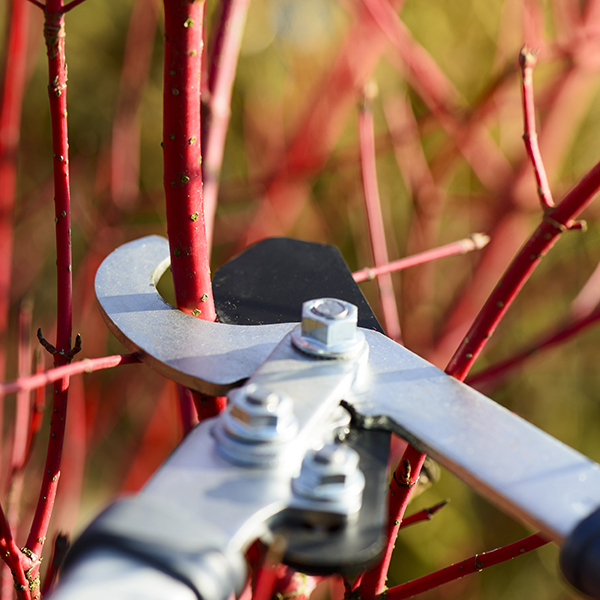It’s been a stressful year for all of us with so many of our usual activities heavily curtailed by the pandemic. A lot of people coped with that stress by spending time outside working in the yard. We put in new garden beds, improved existing landscaping, and generally spent more time outside enjoying nature. As the winter months go by, we have been unable to spend as much time outside and sometimes spring, with its promise of renewal, seems far away. Why not get out in the yard now and get a jump on some necessary landscape maintenance chores for the coming season?
Winter (or what has come to be known as “dormant”) pruning has long been recognized as an important component of any good maintenance program. First of all, pruning deciduous trees and shrubs at this time of the year is easier to do, mostly because shape and structure is much easier to assess. It is also a better time to locate and remove a plant’s dead, diseased, and weak or damaged branch structure. Crossing branches and watersprouts can be quickly identified. Major pruning at this time is less stressful to the plant and there is less potential for spreading disease for susceptible hosts. Beyond controlling for size or repairing damage, we can prune now to correct shape and to encourage healthy, vigorous new shoot growth in the spring. Renewal pruning, where up to 1/3 of the oldest stems are removed at the base of the shrub, is a great way to rejuvenate tired older plantings that may not be performing up to expectations. Remember that most spring blooming shrubs flower on last season’s growth, which means that serious pruning will decrease the amount of flowering this season as any buds present on older wood are also removed. However, the benefit of having a healthier, more vigorous specimen both next summer and in the future, should outweigh this deficit. Remember, these guidelines are for deciduous woody plants only. General pruning of broadleaf evergreens, such as rhododendrons and azaleas, is not recommended at this time.
As for the home orchard, late winter and very early spring has always been considered an optimal time to prune fruit trees. This would include the stone fruits (peaches, nectarines, apricots, etc.), now that the worst of winter’s coldest weather is behind us. Keep in mind that, although it is too early now, next month is prime time (weather permitting) for applying dormant oil to help suppress overwintering insect/ disease populations. This is an important adjutant to any winter pruning intended to promote successful fruit formation.
Regardless of time of year, always be sure to use a sharp cutting blade, making clean, angled cuts that will promote normal healing. Prune side branching outside the branch collar (i.e., avoid flush cuts) and try to head back shrubs to just above a leaf bud.
As far as pruning of larger shade trees, this is work that most homeowners are content to leave to the professionals. Winter is traditionally a slow season for arborists as well, so there may be an additional financial incentive to get a jump on the season. Look for companies that hire certified arborists and always ask for proof of insurance.
Although some of your landscape plantings may still be snow-covered, do not despair! The calendar is on our side as we transition to late winter/early spring. An opportunity to get a big jump on spring will soon present itself. Dormant pruning is definitely the way to go.








